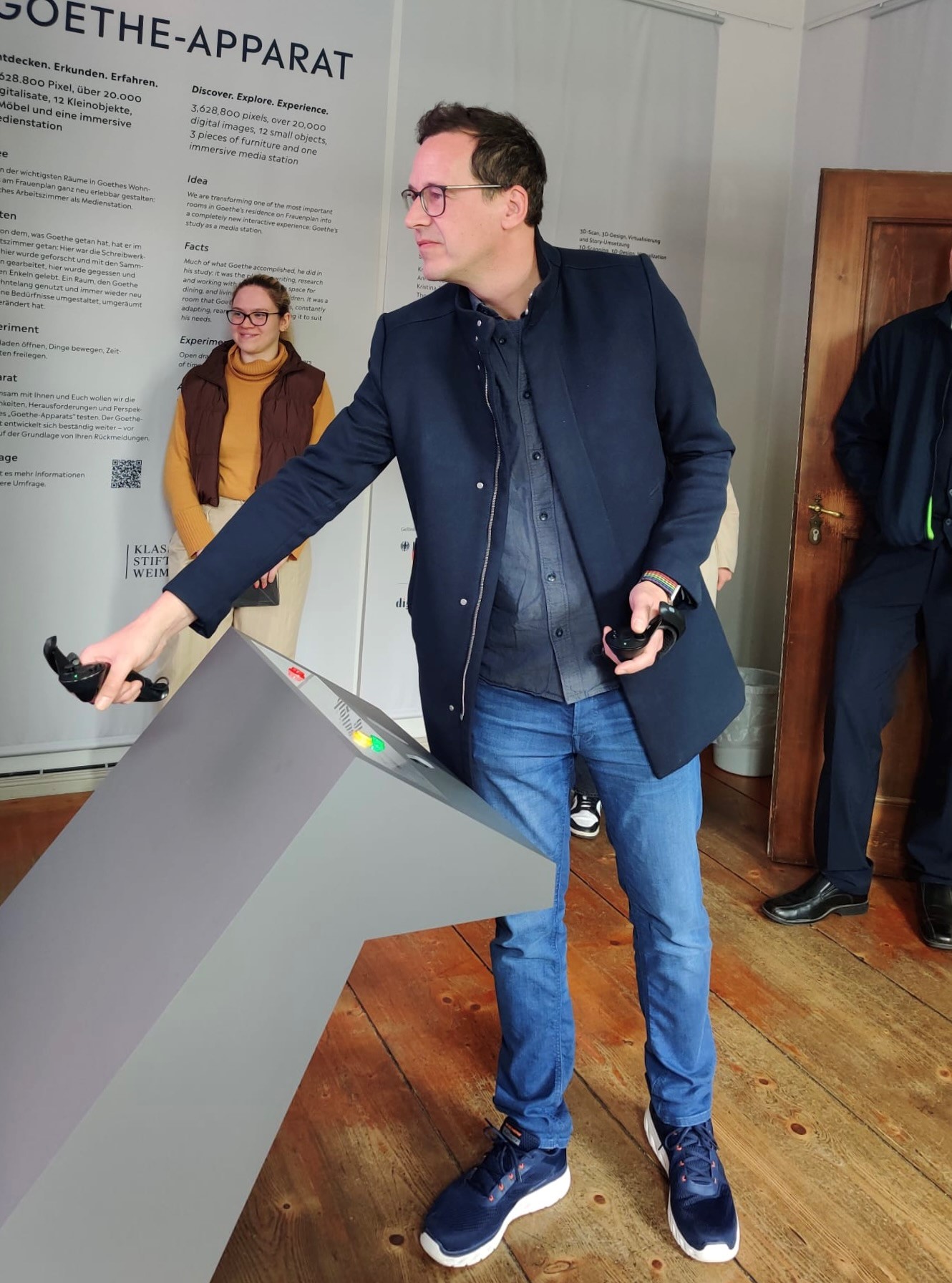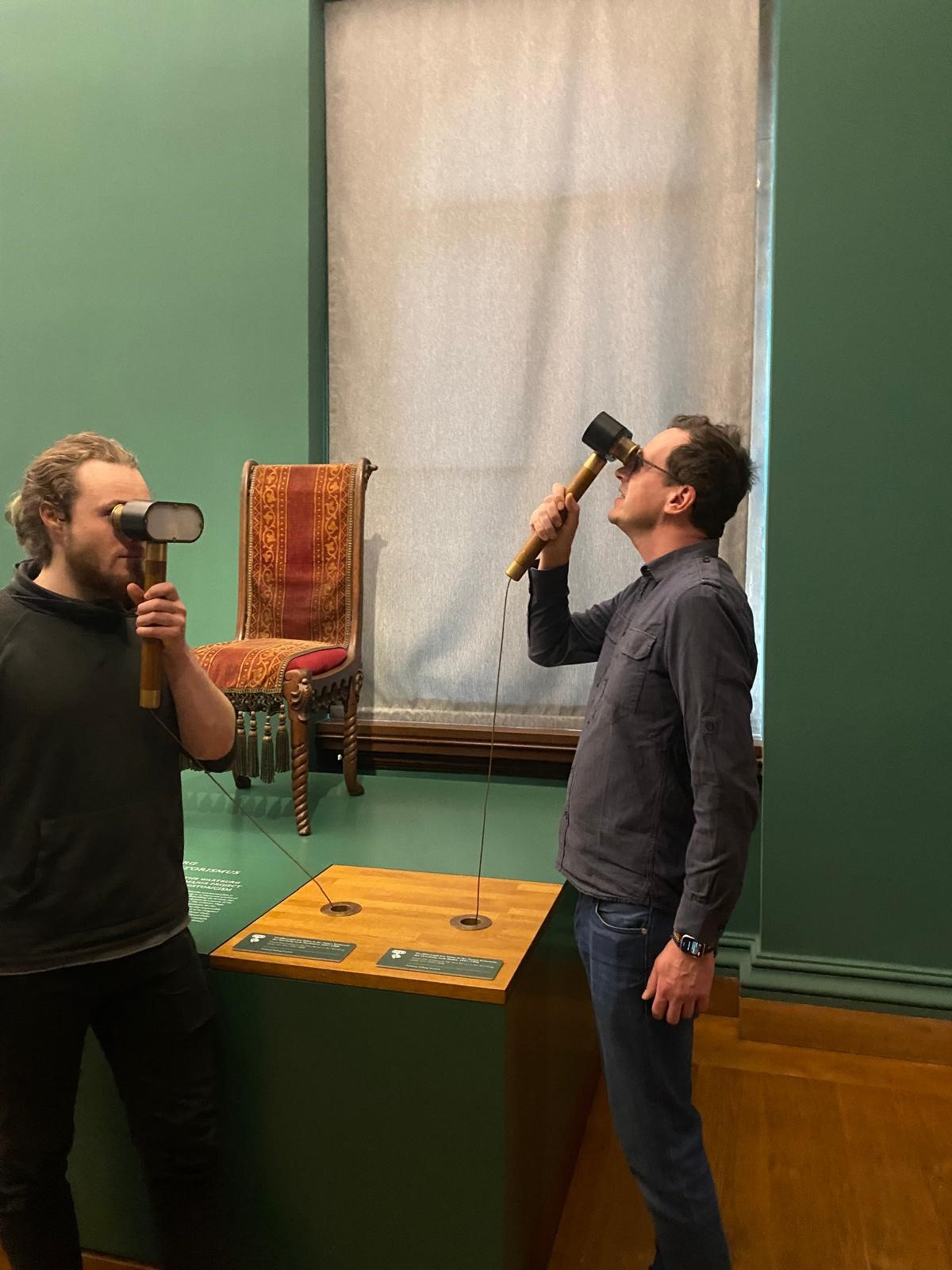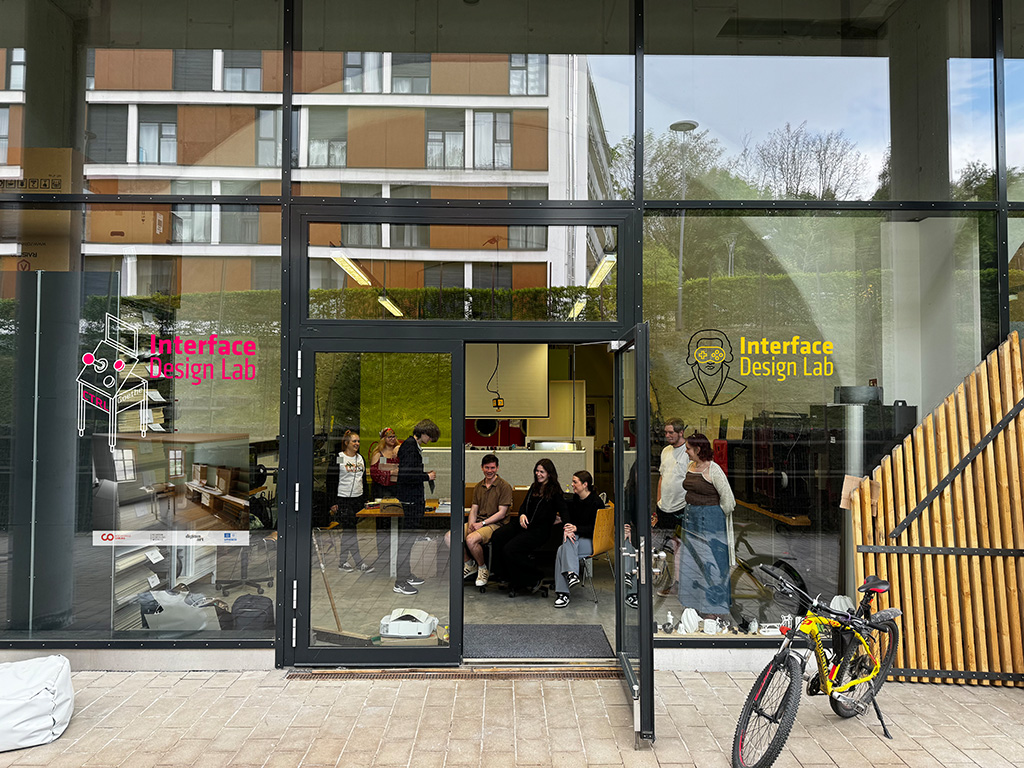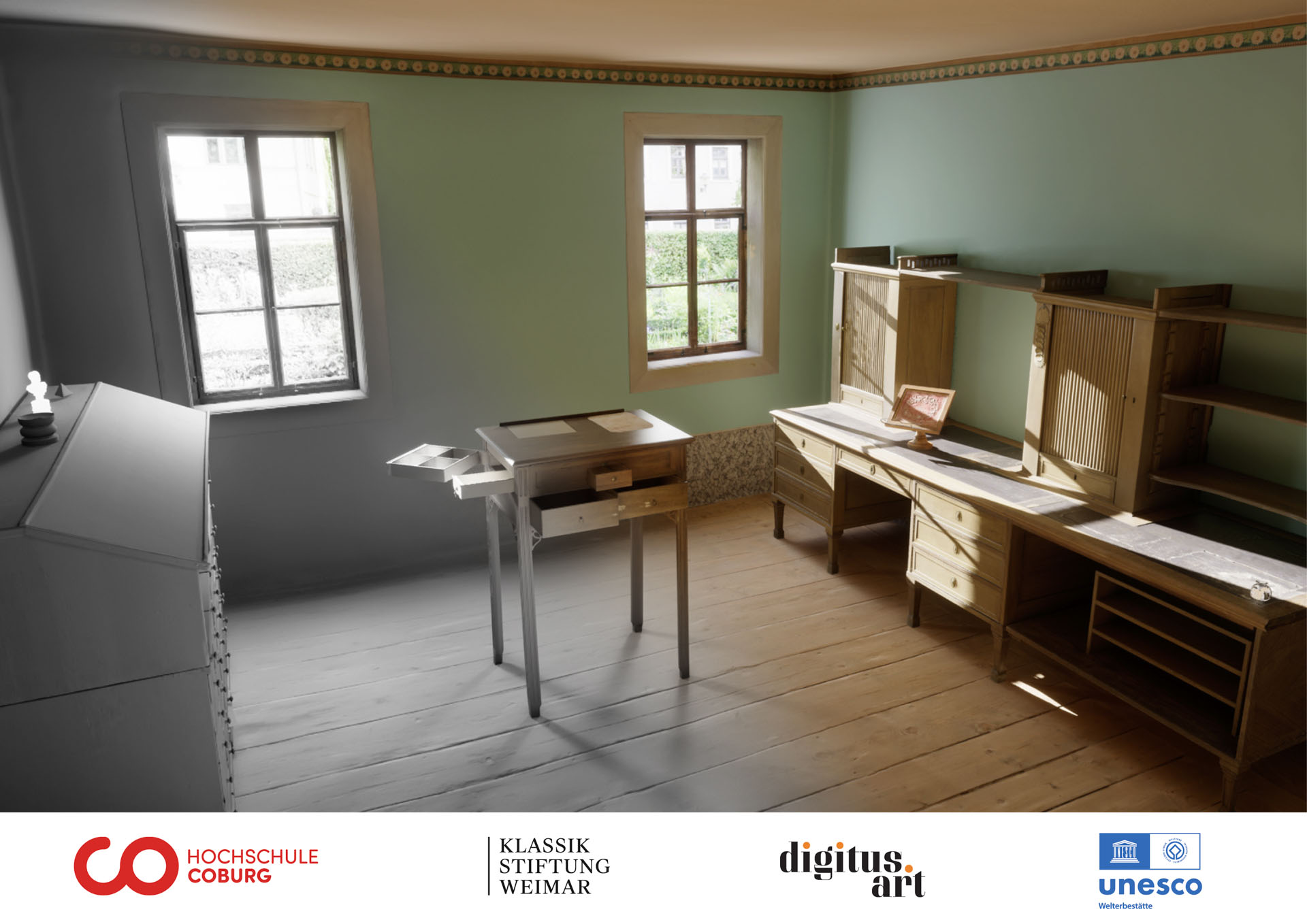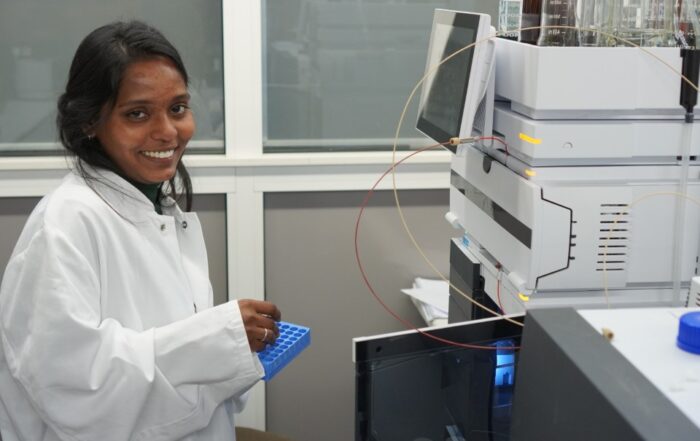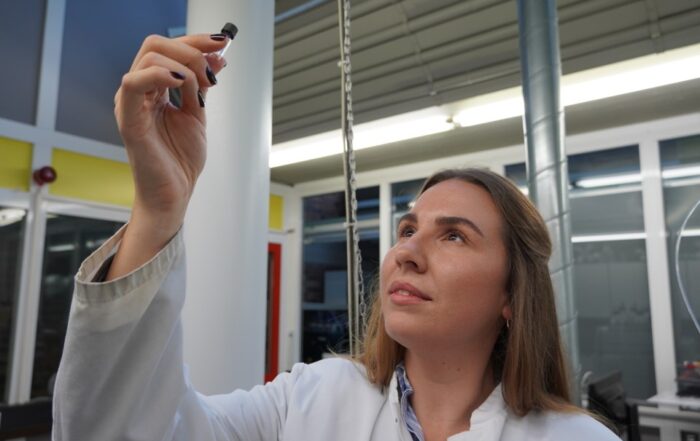11. July '24
By Andreas T. Wolf
In a pilot project by the Klassik Stiftung Weimar, Johann Wolfgang von Goethe’s study and workroom has been recreated digitally and in high resolution.
Visitors to the Goethe National Museum Weimar can get a realistic impression of the room using the “Goethe apparatus”.
Students of Integrated Product Design at Coburg University of Applied Sciences, among others, have been working on how to make it tangible.
Their work can be seen today and tomorrow in Goethe’s house. Goethe’s actual study in his house on the Frauenplan may otherwise only be viewed, but not entered.
But visitors should be allowed to do more than just look.
They should experience, explore and learn – and even be allowed to open a drawer.
This requires contact with the room.
Together with the Digitus Art agency and the Directorate of Digital Transformation at the Klassik Stiftung Weimar, Prof. Dr. Michael Markert from the Faculty of Design and his students have now worked on proposals for clear and intuitive controls so that museum guests can explore the room.
But how do they move around a virtual room without walking?
How do they look around without a body?
How can they open a drawer or unfold Goethe’s drawing table?
Prof. Markert knows that these are questions that designers have to deal with: “After all, it’s not just about designing appealing products, but also about the important insight that the use and operation of designed things has an effect on us and thus shapes our behavior: This means that interaction design plays an important role in the field of product design.”
Complex gaming controllers are not understandable for all user groups, which is why the students had to investigate the core issues of interaction, orientation and navigation at the interface between digital, physical and virtual spaces.
Thanks to their background in product design studies, the young designers designed and modeled user interfaces, input devices, controllers and panels.
These were then tested and improved with test subjects.
The translation of inputs with physical, “tangible” interfaces into movement and actions in a virtual space is not as easy as it seems, says Prof. Markert: “Depending on the perspective, at some point right is no longer left, namely when I turn around”. Making space tangible To answer these questions, ten students have worked on solutions, such as Lea Kemmelmeier: she has designed two intelligent handles whose operation is based on natural movements of the hands and arms for gripping, opening and closing.
This allows guests to fold out Goethe’s drawing table, for example, or open the drawers at the work table.
Julia Kipke experimented with a ball control, an intuitive and mouse-like track ball, whose outward appearance corresponds to Goethe’s “Stone of Good Fortune”, a sculpture from Goethe’s garden that sculpturally thematizes his complicated relationship with Charlotte von Stein.
In the historical depiction of rooms in museums, one must inevitably commit oneself to a specific time, although private and semi-public living spaces change.
New furniture is added, new wall colors and new objects.
Fabian Söllner took up this theme with a digital timeline.
After selecting a specific year or theme, the room rearranges itself accordingly.
Laura Ankenbauer and Nadja Chrystianowicz took a contemporary approach: they used an AI-based sensor on a microchip that recognizes gestures. This natural form of input allows for natural yet high-tech interaction.
The situation is different with a scaled-down model of the study: Stella Schrüfer has built physical models whose objects and surfaces can be touched directly.
Johannes Schmidt experimented with touch surfaces that can be easily operated without visual control.
Users can intuitively grasp the haptic feel of template-like surfaces attached above the touchscreen.
With this technology, even older tablets could still be used as universal controllers for a wide range of applications.
Finally, Nils Rohlfs worked on a multi-user input via mobile devices, which should also enable interactions between viewers in the future.
These works can be seen until July 12 in Goethe’s residence in the special exhibition room at the entrance to the courtyard passageway in Weimar.
An insight into the ongoing work was already given at the Campus.Design Open at Coburg University of Applied Sciences in the Interface Design Lab in Coburg in May.
This is the second collaboration with the Klassik Stiftung Weimar, which has already produced exciting projects in July 2023.
With 31 museums and places of experience as well as 12 UNESCO World Heritage Sites, the foundation is one of the largest and most important cultural institutions in Germany.
The pilot project “Goethe Apparatus“, funded by the Federal Government Commissioner for Culture and the Media via the Neustart cultural initiative, can be seen at the Goethe National Museum in Weimar.


